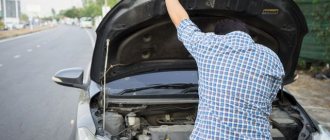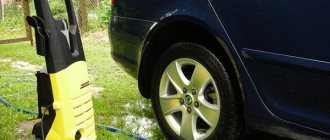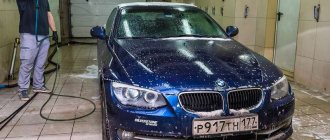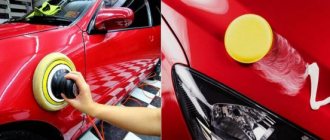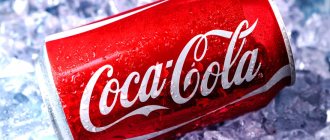Tire and wheel store in Tuapse - tire fitting.
In stock and on order. Every person who respects himself and his iron horse should take care of the cleanliness of his car. The appearance of a car largely determines a person, as do clothes. A person monitors the neatness of his appearance, clothes should be ironed, shoes should be polished. In a way, a person's clean and tidy appearance speaks volumes about their personality. A person’s car also characterizes him, so it is necessary to monitor its cleanliness. In addition, traffic rules prohibit operating a car with dirty reflectors and external lighting devices. And these are not all the reasons to constantly keep your car clean, especially in winter.
To wash or not to wash.
Car wash in winter - wash more often, as little as possible, or not wash the car at all? We answer the most important questions about winter car washing. You will learn how often to wash your car, when to wash it and where, as well as answers to other questions that motorists often have in the winter.
There are many opinions regarding proper car care in winter. Some people think that it is better to wash in winter only in automatic car washes. And as often as possible. Some people, on the contrary, believe that it is better to wash the car yourself in a regular car wash by hand. And as little as possible. There are also car enthusiasts who believe that they should not wash their car in winter, since any washing in winter risks damaging the paintwork of the body. Who is right? Let's break it down by answering the most important questions about winter car washing.
Is it possible to wash a car with hot water in winter?
You cannot wash your car with hot water. Even warmed up in a warm box. The temperature difference is destructive - remember? In the summer, too, by the way, it is undesirable. Unless, of course, you want the paint to crack or even burst. In winter, it is advisable to wash your car with warm water.
If you are planning to wash your car with hot water only because you think that it will take longer to freeze outside in the cold, then I strongly want to dissuade you from doing so. Don't risk the "health" of your car!
How often should you wash your car in winter?
According to numerous studies, in many countries, your car needs to be washed just as often in the winter as in the summer months. First of all, the car needs to be washed so that in cloudy weather the car is more visible on the road, since during snowfall, blizzard or rain, dirty vehicles are often less noticeable on the road.
Theoretically, a dirty car has a greater risk of being involved in an accident. True, after the traffic rules obligated all drivers to turn on low beam headlights, the visibility of vehicles on the roads became much better. It is also worth remembering that, according to current traffic regulations, you can be fined for dirty license plates. There is no fine for a dirty car in Russian legislation. But traffic police officers often charge drivers with dirty cars on the following grounds:
- — part 1 of article 12.2 of the Code of Administrative Offenses of the Russian Federation
- — part 2 of article 12.2 of the Code of Administrative Offenses of the Russian Federation
and even:
- — Article 12.33 of the Code of Administrative Offenses of the Russian Federation
Of course, most often traffic police officers bring drivers to administrative responsibility for dirty license plates than under Part 1 of Article 12.2 of the Code of Administrative Offenses of the Russian Federation and under the very formidable Article 12.33 of the Code of Administrative Offenses of the Russian Federation, which probably applies only to dirty heavy trucks.
But nevertheless, keep in mind that if pieces of dirt literally fly off your car, then you risk paying a large fine.
So as soon as you feel that your car is too dirty, go to the car wash.
Is it true that salt or reagents on the road can damage the paintwork of a car?
In principle, yes and no. The statement that winter road dirt, which contains salty alkali, has an aggressive effect on the car’s paint applies only to those cars that have damage to the paintwork: scratches, chips, or places on the body with peeling paint.
If the paintwork of the car is not damaged, then the dirt containing the reagent does not have a significant effect on the body. Especially if dirt containing chemical road de-icing agents is washed off from time to time at a car wash.
The same applies to the underbody of the car, which is most susceptible to the influence of road reagents. Automakers have long been making car underbody with additional protection from reagent salts, using improved protection due to galvanized metal sheets. So body corrosion due to reagents is a problem of the past and concerns old cars or cars with damaged areas of body paint.
Features of washing at home
You need to start by removing the top layer of dirt. This is done not with hot water, but with warm water up to +40 degrees, which is poured over the car body from a bucket. There is no need to rush further; you need to wait until the mud crust softens and the dirt and road salt drain off. After this, car shampoo diluted in clean water is applied to the body panels, windows and wheels.
FROM PRACTICE. If you use hot water to wash glass, the glass may burst due to temperature changes. There have been times when car owners, while warming up the engine, did not use the stove to heat the interior. And only after getting into the car did they turn on the heater “full” to warm the windshield. As a result, a crack formed in the blowing zone. And if the heater had been turned on in advance, such an incident would not have happened.
Lathering the body with car shampoo to remove the second layer of deposits, while simple, has two pitfalls: the material used and the chemical itself. Using a rag, especially an unwashed one, is more expensive - abrasive grains of salt and sand will cause an irreparable blow to the car enamel. Therefore, it is better to take microfiber.
Question No. 2 – car shampoo. It must be recommended by the car manufacturer, and not purchased at random. The use of household powder is strictly prohibited - its synthetic base contains a lot of alkali, which corrodes metal. Since even car shampoos contain active substances that decompose dirt, it is also impossible to keep the foam on the body for a long time - 2-3 minutes is enough. After this, you need to thoroughly rinse off the car cosmetics with water.
The final stage is drying the body, which is best done with microfiber material due to its increased ability to absorb liquid. Finally, it will be better if all body panels are blown out with compressed air after this.
When should you not wash your car in winter?
According to research, you should not wash your car at sub-zero temperatures below -10 degrees Celsius. Paintwork, like human skin, is very sensitive to extreme temperature fluctuations. The fact is that when you come from the cold to a car wash, you usually drive into a warm box where the temperature is above zero. As a result, a sharp temperature change occurs, to which the paintwork of the car is very sensitive.
Next, the car is treated with warm water, which adds additional stress to the paintwork due to temperature fluctuations.
Also, don't forget that after a warm car wash you will then find yourself back in the cold once you drive out the gate. There will be another sharp temperature drop. You understand that this will not have a positive effect on the car’s paint. Don't forget that sudden changes in temperature also have a negative impact on the rubber and plastic components of the machine.
Yes, of course, after several washes in severe frost, you are unlikely to notice any changes on the paintwork of the body. But over time, in the long term, the effects of thermal changes will be reflected in the paint of the body.
But let us repeat once again that washing a car in severe frost poses a great threat to other components of the car. Most often, door locks, hinges and various seals are affected, which can be damaged due to sudden temperature fluctuations.
Prevention for locks and seals
Even after thoroughly drying the body, small droplets of water may remain in the locks, plastic and rubber seals. To preserve their functionality, it is recommended to wipe these elements and apply silicone grease from a can. There is no need for special compounds here; any silicone purchased at a car store will do.
Spray the lubricant and remove excess with a soft cloth. Such a fairly universal material as silicone forms a thin protective film on the surface, regardless of its texture - it effectively repels water and prevents the accumulation of dirt for some time.
Can an automatic car wash damage your car's paint?
In recent years, automatic car washes have been gaining popularity in our country. However, in our country, ordinary car washes, where cars are washed almost by hand, are still in great demand. Why are automatic vehicle washing systems not yet widespread in our country, as for example in Europe?
The thing is that many car owners are afraid of such car washes because of the myth that automatic car washes can damage the paintwork of the car. But in fact, this is truly a myth, unless of course we are talking about an unscrupulous owner of an automatic car wash who does not change brushes and other equipment components on time, and also uses low-quality chemicals.
But in most cases, such car washes belong to large chain companies that are not interested in bad reviews from drivers and service automatic equipment on time.
Yes, once upon a time the brushes of automatic car washes could indeed spoil the paint of a car in some cases. This was due to the peculiarity of the materials from which such brushes were made in the old days.
Today, all car washes are equipped with modern brushes made from polyethylene (PE) - polyethylene bristles that cannot damage the paintwork of the car. True, for this, ideally the car body should be pre-washed in order to remove coarse dirt from the surface of the paintwork.
Drying after washing
- Drying is an important part of cleaning in winter. You need to dry the car as well as possible.
- Wet rubber seals will freeze, making it impossible to open the doors without damaging the rubber seals or handles. Wet wiper blades can stick to the glass in the cold.
- Microfiber absorbs moisture well. Use it to dry your car.
Microfiber towels absorb moisture well and do not scratch the surface.
- Open all doors and wipe dry to prevent seals from freezing when doors are closed.
- Be sure to remove all moisture from the gas filler flap. Open it, dry it and leave it open.
- The door windows may also freeze. When the car is washed, they need to be lowered and wiped dry.
- If the interior has been washed, it must also be dried well, otherwise moisture will condense on the glass, impairing visibility.
- If possible, use compressed air to blow out hard-to-reach areas where moisture remains.
- A good tool for quickly drying the body is a silicone Water Blade. The blade (or sometimes called the brush) is made of silicone and has a “T” shaped edge. It's very effective. After using it, the surface dries faster, without streaks. Silicone easily follows the curves of the panels. The silicone blade is very wear-resistant and acts delicately without scratching the paint. This is no ordinary rubber squeegee. The operating principle is the same, but the result is more effective. It removes more than 90% of moisture from the surface.
The silicone blade removes up to 90% of moisture from the surface.
- After drying, renew the protective coating.
- There are also protective products for wheel rims.
What should you pay attention to when visiting an automatic car wash?
As a rule, what you must do before entering the car wash bay is written on the gate. Not always true. However, you should always know what you should do before entering the automatic car wash bay.
Close all windows and the car sunroof. Lock the fuel tank cap. Turn off the windshield wipers. Be careful as many cars have a rain sensor and the windshield wiper blades may turn on unexpectedly while driving inside the car wash. Therefore, you must turn off your wipers completely.
Also, before entering the car wash, remove all traces of snow and ice from the body of the car, since in an automatic car wash they can become analogous to sandpaper, leaving scratches on the body when water under pressure washes away dirt from the body.
Self-service car wash
Firstly, we remember the dangers of cleaning the car frame at a temperature of -10. Secondly, make sure in advance that the water from the blower is supplied not hot, but warm. Thirdly, remove the rubber mats from the interior in advance: they should also be washed, since this is where moisture from melted snow and dirt accumulate, which become a source of unpleasant odors. The washing itself should be carried out taking into account the following recommendations:
Remember that the high pressure pump is great at removing dirt anywhere. Therefore, starting with cleaning the roof, move down to the windows, hood and doors; To prevent the wipers from freezing to the windshield, do not forget to raise them in advance; pay special attention to the “porridge” of dirt, salt and road chemicals that forms on the fender liners, sills and underbody; When the wash is complete, run your hand along the fender liners - this is one of the most difficult places to clean. If mud deposits remain, repeat the procedure; After completing the procedure, the body should be perfectly dried. If possible, blow out all cavities, seals and doorways with compressed air; starting the engine, turning on the heater and opening the doors is a prerequisite if, after leaving the self-service car wash, the car will be parked on the street for some time. This will remove excess moisture from the interior; After leaving the road, do not rush to accelerate, as it is recommended to do a couple of smooth braking sessions, which will allow the brake discs and pads to dry. If you ignore this advice, the brakes will still work, but less effectively; Having parked the car, tighten the handbrake only one click - excessive zeal in this matter can lead to freezing of the brake pads if they are not completely dry. And even more: it’s better not to use the handbrake at all, but to put the car in first gear.
Which car wash is better - traditional or automatic?
There are many opinions on this matter. It is impossible to answer this question unequivocally. Everything, of course, depends on the quality of the washing services provided. You can also ruin your paintwork at a regular car wash, where they use dirty rags containing fine sand to dry the body, which can damage the body paint.
It also all depends on the chemicals used in the wash. It’s not uncommon for owners of cheap car washes, trying to increase profits, to use low-quality, cheap auto chemicals, which affect the paintwork of cars.
In particular, some car washes violate car washing technology. For example, the most common mistake both at car washes and at regular washes is ignoring the preliminary cleaning of the car body from dirt, as a result of which there is a risk of damaging the body paint.
Therefore, when you arrive at the car wash, always make sure that the car wash staff removes coarse dirt from the body under pressure before applying auto chemicals. The same applies to automatic car washes, where before the main washing cycle the car must also be pre-cleaned of dirt. Otherwise, there is a risk of damaging the paintwork.
So we do not advise you to go to an unfamiliar, inconspicuous car wash, where your car could be damaged. Choose only those car wash complexes that you know and that have positive reviews.
About the influence of temperature
First of all, you must understand: in winter you need to do bathing procedures for your four-legged friend only as needed.
You can’t wash your car in winter if the thermometer drops to minus 10 - this is also an axiom. Strictly speaking, at any negative temperature, water will quickly turn into ice, the difference will only be in the rate of crystallization.
Here are the arguments why we are so categorical about “water procedures” in the open air:
- The paintwork does not withstand temperature changes very well. If the paintwork at first glance looks monolithic, this does not mean that it really is, especially on older cars. Damage will definitely be found, albeit in places hidden from view. This means that water will get under the paint, freeze and, expanding, deepen the damage;
- the same thing can happen with other elements of the car: headlights, plastic parts, glass. If there are even microscopic cracks, these are potentially dangerous places;
- moving metal parts (locks, hatches, door hinges) may become blocked as a result of freezing water, so there is a high probability that you simply will not be able to get inside (or, even worse, get out of the car).
But if the frost is minimal (less than -5°C), these troubles can be avoided if you work quickly. The main rule here is simple - you cannot wash your car in winter with either hot or warm water. First of all, due to the sensitivity of the paintwork, the thickness of which ranges from 80-150 microns (we are talking about a factory coating). This is only 0.08-0.15 millimeters.
But the most optimal time for washing is, of course, a thaw. Fortunately, the winters are now unusually mild. But there is also a drawback here - at zero or positive temperatures, the snow begins to melt, mixing with dirt, and then your car will not be clean for long. That is why you can sometimes come across the judgment that in winter you have to do car hygiene even more often than in summer. As we can see, it is not without reason, but it all depends on specific weather conditions - winter does not happen after winter.
Should you wax your car?
In recent years, it has become fashionable to coat cars with various chemical and natural compounds. But this usually doesn't come cheap. Is it worth spending money on additional body treatment? Here, of course, each driver must decide for himself.
But it is worth noting that a long-term study was recently carried out in Germany, which showed that it makes no sense to wax a car in winter.
It is more important to monitor the car body and, if chips, scratches and other damage are found, correct them in a timely manner to avoid the formation of corrosion due to exposure to moisture and road salt.
You should also not wax cars that already have areas of rust. In this case, waxing is a waste of money because wax will not stop rust.
How to wash your car outside in winter yourself?
If for some reason you don’t want to spend money on washing your car at a car wash where professionals work, and you are interested in the question of how to wash your car outside in winter, then let us immediately dissuade you from doing this. And that's why:
- Cold. Even more. Try washing your hands and, without wiping, walk down the street for 15-20 minutes - I think you’ll feel what it’s like. And when washing, water will fly in all directions. It's not just your hands that will be wet. Warm water won't help, you'll freeze anyway. It won't take long to get sick. Washing your car in the cold in winter is dangerous to your health, and this is no joke.
- In cold weather outside, water (even warm) will freeze in a couple of minutes. Even if it's minus five outside. You pour water, start wiping in one place, and in another there is already a crust of ice on the body.
You read the advice on the Internet and you’re amazed at how “experts” everyone is on how to wash your car yourself in winter. I especially like the point that is repeated almost word for word by many of these specialists. The one in which the instructions are given that exactly three buckets of water should be poured onto the car. No more and no less. Who decided this, tell me? Who set this volume? Storytellers, damn it... Here's my word of honor: if you're copying it from someone, express the thought differently. But oh well, we're getting off topic.
In summer it is even interesting to wash your car. But in winter, I think washing it is an extreme act of its kind. The sensations are amazing, but the benefits are amazing. You don't need this, believe me. It is more or less convenient to wash your car yourself in winter only in a garage or a warm box so that the temperature is above zero. Then the water will not freeze and will be warm.
If you wash in the garage, then a DIY dry wash is just what you need. True, if the car is not too dirty. Then you don’t need to think about where the water should flow. The main thing is to follow the technology.


